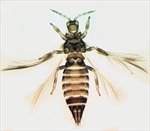
Female
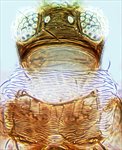
Neohydatothrips samayunkur head & pronotum
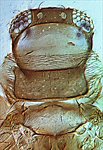
Neohydatothrips flavicingulus_head & pronotum

Neohydatothrips gracilicornis head and thorax
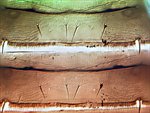
Neohydatothrips gracilicornis tergites III-IV
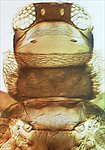
Neohydatothrips magnoliae head and pronotum
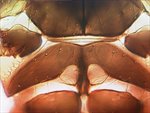
Neohydatothrips magnoliae metasternum
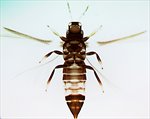
Neohydatothrips magnoliae female
Generic diagnosis
Female macropterous (rarely micropterous). Head wider than long; ocellar setae pair I present, three pairs of postocular setae; maxillary palps 3-segmented. Antennae 8-segmented (rarely 7), segment I without paired dorso-apical setae, III and IV with sense-cones forked; III–VI with microtrichial rows on both surfaces; VIII with sense cone base very long and narrow. Pronotum wider than long with median blotch; one pair of long posteroangular setae. Mesonotum median pair of setae near middle; anteromedian campaniform sensilla absent. Metanotal sculpture variable; median pair of setae at or close to anterior margin; campaniform sensilla absent. Fore wing first vein setal row complete; second vein with 0–2 distal setae; clavus with four veinal and one discal setae; posteromarginal fringe cilia wavy. Prosternal ferna undivided; basantra membranous and without setae. Mesosternal endofurca with spinula; metasternal endofurca with or without spinula; metasternal internal plate with anterior margin varied, transverse to slightly concave. Legs fully covered with microtrichia, tarsi 2-segmented. Tergites without ctenidia, craspedum present or absent, dense microtirichia present on lateral thirds; II–VIII with median setae longer than distance between their bases; VIII with complete comb on posterior margin; IX without anterior campaniform sensilla, with more than one pair MD setae; X median split absent. Sternites with microtrichia at least on lateral thirds, without discal setae; craspedum present or absent, sternites III–VII with 3 pairs of posteromarginal setae, II with 2 pairs; VII with all setae in front of posterior margin.
Male similar to female but smaller; sternites without pore plates or with pore plate on III–VII.
Biological data
Larvae of Neohydatothrips species are found both in flowers and on leaves.
Distribution data
Members of this genus are found worldwide (Lima & Mound, 2016b), and in China there are species of Neohydatothrips in both the temperate and sub-tropical areas.
Nomenclatural data
Neohydatothrips John, 1929: 33. Type species Neohydatothrips latereostriatus John, 1929, by monotypy, synonym of Sericothrips portoricensis Morgan, 1925.
This genus comprises 118 species worldwide (ThripsWiki, 2020), and the following 12 species have been recorded from China:
concavus Mirab-balou, Tong & Yang, 2013: 187.
elaeagni (Kudo, 1991: 535). (Hydatothrips: Neohydatothrips)
epipactis (Kurosawa, 1941: 548). (Sericothrips)
flavicingulus Mirab-balou, Tong & Yang, 2013: 187.
gracilicornis (Williams, 1916: 222). (Sericothrips)
gracilipes (Hood, 1924: 149). (Sericothrips)
luteolipes Mirab-balou, Tong & Yang, 2013: 193.
magnoliae Zhang, Xie & Li, 2012: 62.
medius Wang, 1994: 257.
plynopygus (Karny, 1925: 29). (Anaphothrips)
samayunkur (Kudo, 1995: 169). (Hydatothrips: Neohydatothrips)
surrufus Wang, 2007: 65.
tabulifer (Priesner, 1935: 351). (Sericothrips)
tadzhicus (Pelikan, 1964: 228). (Sericothrips)
trypherus Han, 1991: 451.
xestosternitus (Han & Cui, 1991: 1). (Kazinothrips)
Relationship data
Thripidae sub-family Sericothripinae: Neohydatothrips is one of only three genera now recognised in this group (Lima & Mound, 2016a). In contrast, more than 10 further genera have been proposed in this group but are now placed in synonymy (ThripsWiki, 2018). All species of Neohydatothrips have the internal metathoracic plate with the anterior margin almost transverse, in contrast to species of Hydatothrips.
References
Lima EFB & Mound LA (2016a) Systematic relationships of the Thripidae subfamily Sericothripinae (Insecta: Thysanoptera). Zoologischer Anzeiger 263: 24–32.
Lima EFB & Mound LA (2016b) Species-richness in Neotropical Sericothripinae (Thysanoptera: Thripidae) Zootaxa 4162 (1): 1–45.
ThripsWiki (2020) ThripsWiki - providing information on the World's thrips. <http://thrips.info/wiki/Main_Page>